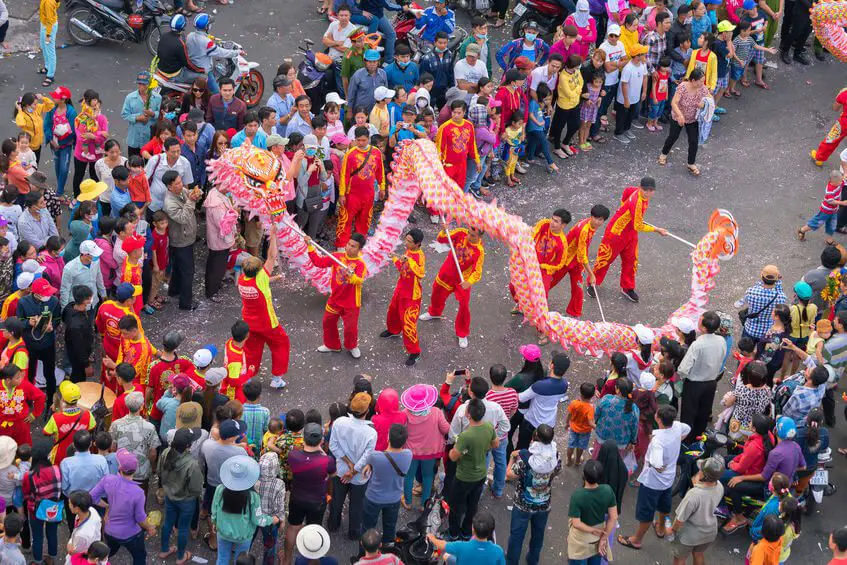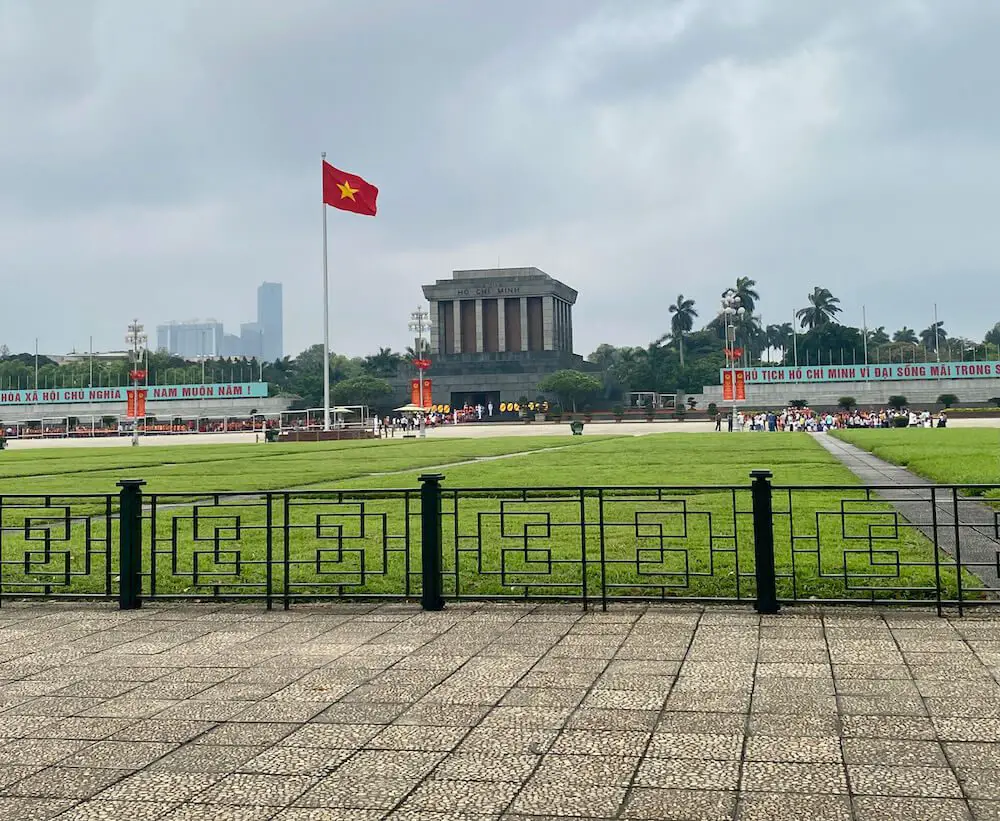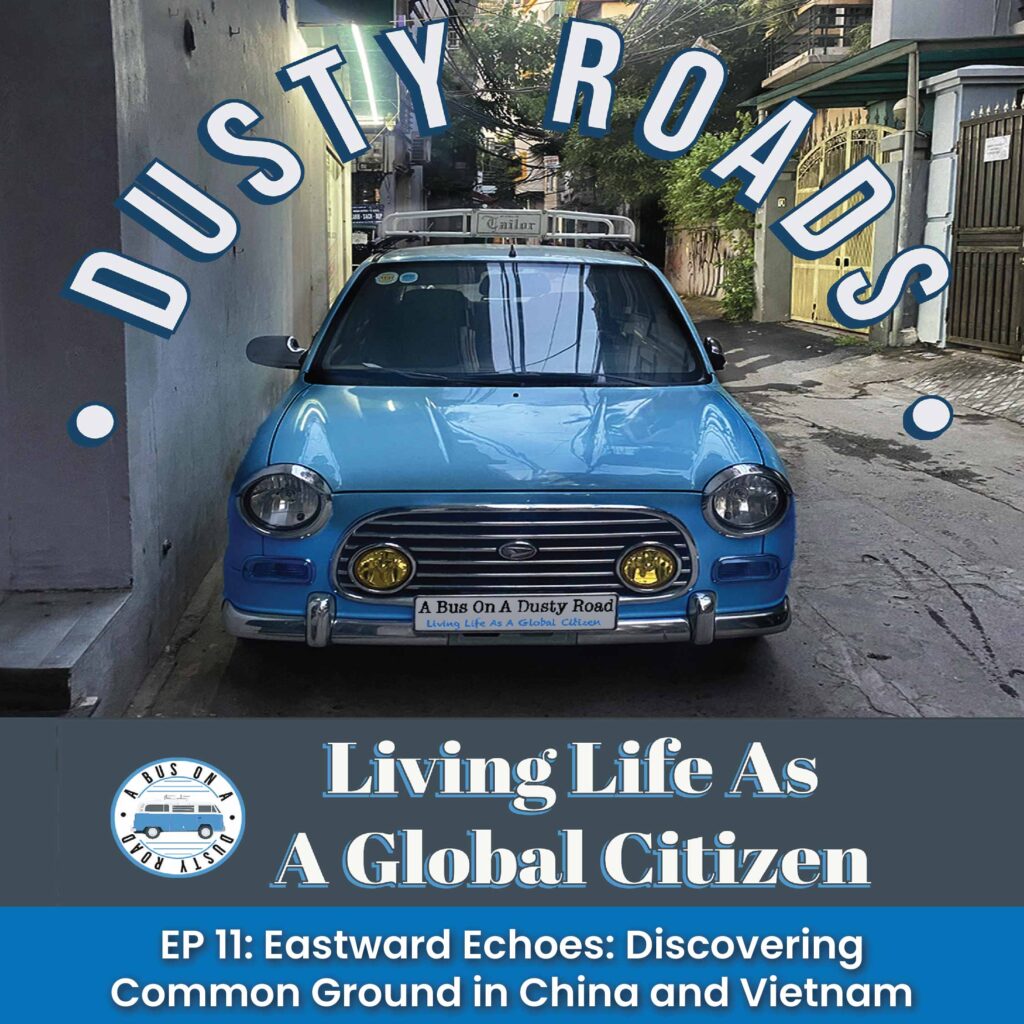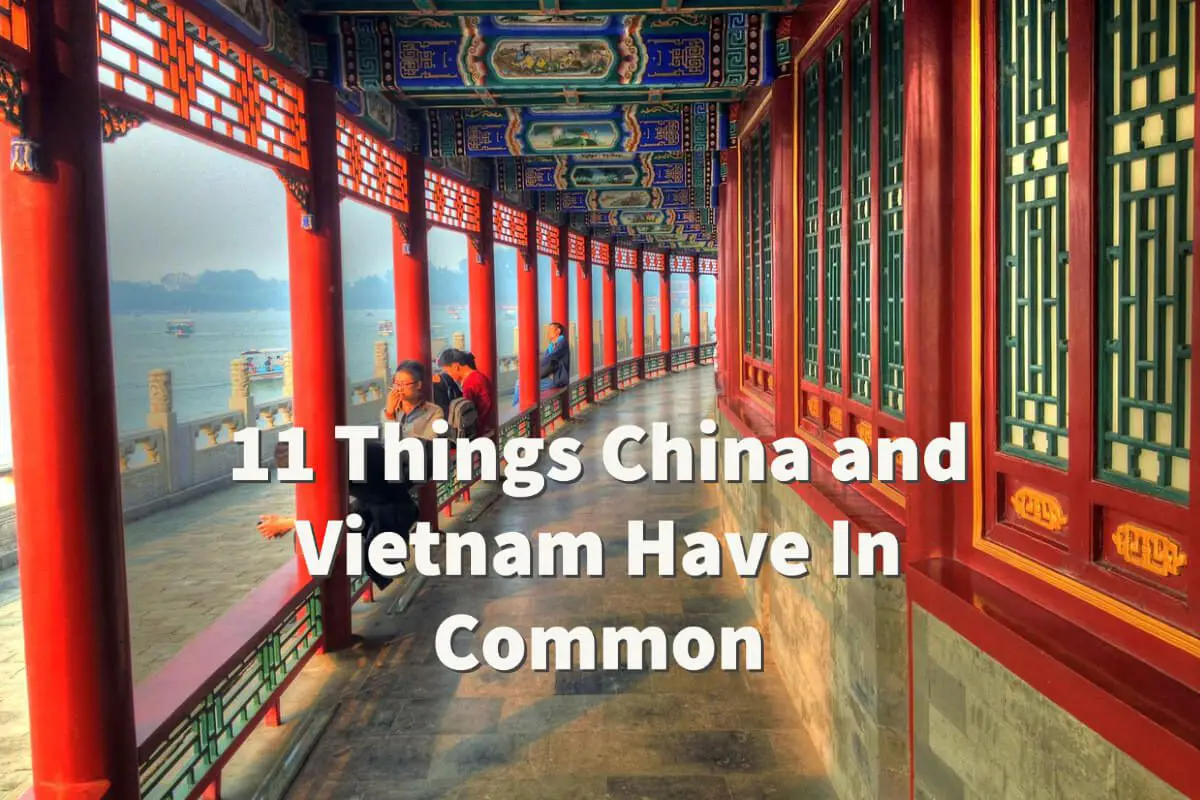I have lived in both China and Vietnam. I have studied Chinese and Vietnamese languages and culture; it is surprising how many things in familiar China and Vietnam have.
China and Vietnam are Asian countries with many similarities in their culture, traditions, and language. Both are patriarchal societies that believe in ancestor worship. Many of their shared traditions include many traditional holiday celebrations. Their government systems are similar.
Table of Contents
- 11 Things China and Vietnam Have In Common (My Observations)
- 1. China and Vietnam Are Patriarchal Societies
- 2. Chinese and Vietnamese Have Language Similarities
- 3. Chinese and Vietnamese Share Traditional Holidays
- 4. China and Vietnam Have Lion or Dragon Dances
- 5. Chinese and Vietnamese Both Worship Ancestors
- 6. Chinese and Vietnamese Have Family Genealogy Books
- 7. Common Aspects of Chinese and Vietnamese Cuisine
- 8. Both China and Vietnam Are Socialist/Communist Countries
- 9. Both Have Mausoleums For Their Former Leaders
- 10. China and Vietnam Are Buddhist Countries
- 11. China and Vietnam Are Both In Asia
- Listen To Our Podcast About Eastward Echoes: Discovering Common Ground in China and Vietnam Below or By clicking here.
- Related Questions
Here are some top picks of the 11 things China and Vietnam have in common. Most of these similarities are from my observation and experience living in China and Vietnam for many years.
11 Things China and Vietnam Have In Common (My Observations)
China and Vietnam are two of the most dynamic economies in Asia, and both have a long-standing connection with each other. In many ways, they share similar characteristics that make them such powerful neighbors. From their culture to history, geography, politics, and more, one can easily observe how much these two countries have in common.
Here are some top picks of the 11 things China and Vietnam have in common. Most of these similarities are from my observation and experience living in China and Vietnam for many years.
1. China and Vietnam Are Patriarchal Societies
Both Vietnam and China are considered patriarchal societies. This is because the man or patriarch of a family has had a significant role and authority. A patriarchal society is defined as:
“Patriarchy, the hypothetical social system in which the father or a male elder has absolute authority over the family group; by extension, one or more men (as in a council) exert absolute authority over the community as a whole.”
Britannica
As both Vietnam and China have become more modern societies, men do not always have the absolute power they once had. However, it is still common for a family to favor a male child versus a female child. Or to give their son everything, including all the education and opportunities, while not giving their daughter very much.
The socialist or communist governments in Vietnam and China has helped change this absolute patriarchial society; many women have held powerful government positions. Many women have also been able to take leadership roles at work, in society, and at home.
2. Chinese and Vietnamese Have Language Similarities
Chinese and Vietnamese are not the same languages, but the two languages do have some similarities. Here are some of their top similarities:
- Tonal Language – Both Chinese and Vietnamese are tonal, meaning the word and tone will give the word meaning. Mandarin Chinese has 4 tones, and Vietnamese has 5 tones.
- Similar Sounds – Chinese and Vietnamese can have some words that sound similar. Some words may sound the same and even share an ordinary meaning.
- Similar Grammer Structure – The grammar structure of Vietnamese and Chinese is also similar.
Even though the languages have similarities, a Chinese person cannot understand Vietnamese. Vietnamese people cannot automatically understand Chinese Chinese, and Vietnamese a very different spoken and written language.
3. Chinese and Vietnamese Share Traditional Holidays
Both China and Vietnam share some of the same traditional holidays. In Vietnam, the Lunar New Year holiday is called Tet; in China, the same holiday is called the Spring Festival or Chinese New Year.
You can discover more about the Lunar New Year Holiday; you can read Is the Chinese New Year and the Lunar New Year the Same? by clicking here.
Two other major holidays both countries share are the Ching Ming (Qing Ming) festival in April and the Mid Autumn Festival in the fall. Both of these festivals are celebrated in China and Vietnam. You can find out more about the Ching Ming festival by reading Where Is The Ching Ming (Qing Ming) Festival Celebrated? All About by clicking here.

4. China and Vietnam Have Lion or Dragon Dances
Both China and Vietnam have what is called a lion or a dragon dance. However, the dances may use different names that are about the same dance. You may find people out on the streets performing these traditional dances for some traditional festivals. The drumbeat, music, and dances are very similar in Vietnam and China.
5. Chinese and Vietnamese Both Worship Ancestors
Both China and Vietnam worship their ancestors. It may be common to go into someone’s house and find an altar with a picture of a relative who has passed on. This is because both countries worship their ancestors.
Ancestors or your family are significant in both cultures. Most Vietnamese and Chinese understand where their families have come from. Many know and understand where their hometown is or where most of their ancestors grew up or lived.
6. Chinese and Vietnamese Have Family Genealogy Books
Both China and Vietnam have or had family genealogy books that have a record of their family. Keeping the family genealogy books was something that has been taught and practiced in both places for centuries.
As a traditionally patriarchal society, many of these books only list the male child born in a family. Many family books have no records of any female children or female spouses.
In China, during the Mao Tse Tung-led Cultural Revolution, many of these old family books were destroyed because the Chinese Communist Party considered them one of the four old that needed to be taken out of society. During this time, many families lost their family books and records.
Vietnam did not have a cultural revolution, so many family books have been kept intact within Vietnam and the family or clans. Some of these books go back 22 generations or longer. To learn more about Vietnamese Genealogy, you can read Vietnamese Genealogy – Searching For Your Vietnamese Family Tree by clicking here.
One of the oldest family books in China is the Confucius family. Confucious was born in 551 BCE, so this family book goes back thousands of years.

7. Common Aspects of Chinese and Vietnamese Cuisine
There are some common aspects in both Chinese and Vietnamese cuisine. The Chinese like to stir fry or do what is also called a quick fry with their meats and vegetables; many Vietnamese dishes will also use the same quick fry or stir-fry method, especially for many northern Vietnamese dishes.
Some Northern Vietnamese dishes also use soy sauce, as does Chinese cuisine. But unlike Chinese food, Vietnamese eat fresh vegetables, whereas the Chinese usually prefer their vegetables to be cooked.
To learn more about stir-fry cooking, you can read What is the Asian Stir-fry Cooking Method? by clicking here.
8. Both China and Vietnam Are Socialist/Communist Countries
Both China and Vietnam are Socialist or Communist countries that adhere to the principles of Stalin and Karl Marx. Both turned to Russia or the Soviet Union politically, not the West or the United States. To learn more about Marxism, you can read What is Marxism? The Marxist Thought Explained In Simple Terms by clicking here.
Both countries, for some time, were closed to foreigners from Western countries. Eventually, both China and Vietnam did open up to foreigners and for foreign investment. Both countries now export to the West, including to the United States.

9. Both Have Mausoleums For Their Former Leaders
Both Vietnam and China have a mausoleum for their former leaders. The outside of both mausoleums look quite similar; the mausoleum buildings both have a Russian style.
China’s leader, Mao Tse Tung, is interred and preserved in a mausoleum at Tiananmen Square in Beijing, China. Ho Chi Minh, the Vietnamese leader, is interred and preserved at a mausoleum in Hanoi, Vietnam.
10. China and Vietnam Are Buddhist Countries
Both China and Vietnam are mainly Buddhist countries. When you travel throughout Vietnam, especially in North Vietnam, many Buddhist temples look and feel like temples you may see in China.
China controlled a large part of Vietnam for over 1000 years. Many aspects of Chinese culture were rooted in Vietnamese culture. To learn more about Vietnam’s history, you can read A Brief History of Vietnam, What You Should Know Before You Go by clicking here.
11. China and Vietnam Are Both In Asia
China and Vietnam are both considered Asian countries. Technically, Vietnam is part of Southeast Asia, and China is part of Asia. But they are both considered to be Asian countries.
This is because if you look at a map, you will see that North Vietnam borders China. If you go to some of the northern border areas of Vietnam, you may find Vietnamese people living on or near the border speaking fluent Chinese.
Even though China and Vietnam are separate countries, and many times even at odds with each other, they do have quite a bit in common. Both China and Vietnam share a long history and culture.
Listen To Our Podcast About Eastward Echoes: Discovering Common Ground in China and Vietnam
Below or By clicking here.

At A Bus On A Dusty Road, we talk about travel, life, and ex-pat living. We are all about “Living Life As A Global Citizen.” We explore social, cultural, and economic issues and travel.
We would love to have you be part of our community. Sign up for our newsletter to keep up-to-date by clicking here. If you have any questions, you can contact me, Anita, by clicking here.
Listen to our Podcast called Dusty Roads. You can find it on all major podcast platforms. Try out listening to one of our podcasts by clicking here.
Subscribe to our A Bus On A Dusty Road YouTube Channel filled with great videos and information by clicking here.
Related Questions
How Long Did It Take to Build the Whole Great Wall of China?
The Great Wall of China took over 2,000 years to build. The building spans many Chinese Dynasties for about 22 centuries. The construction of the wall ended in the Ming Dynasty in 1644. The Great Wall is one of the largest human-made construction projects globally; it is over 21,196 kilometers or 13,171 miles. There are over 25,000 watchtowers scattered throughout the Great Wall structure.
You can read more about the Great Wall of China but read How Long Did It Take to Build the Whole Great Wall of China? by clicking here.
How Many Vietnam War-era Bombs Are Still in Vietnam?
It is estimated that at least 350,000 tonnes of bombs, or about 5% of Vietnam War-era bombs, remain in Vietnam. At the present clear-up rate of the explosives, it will take at least 300 years to remove the unexploded ordinances from Vietnam’s landscape.
You can discover more by reading How Many Vietnam War-era Bombs Are Still in Vietnam? by clicking here.


One response to “11 Things China and Vietnam Have In Common”
Your ability to convey complex ideas in such a simple way is truly a gift. Thank you for this great post!